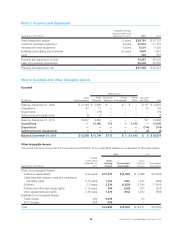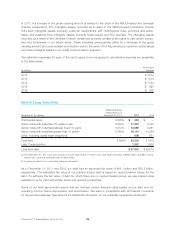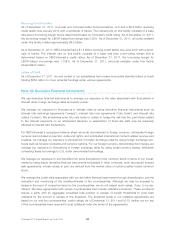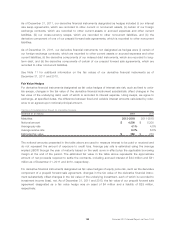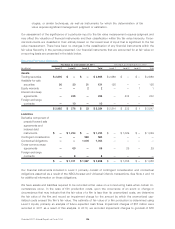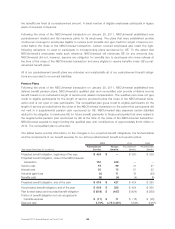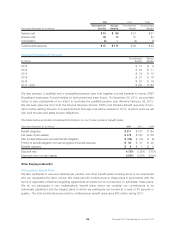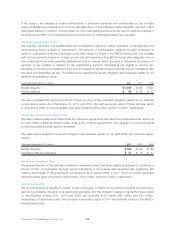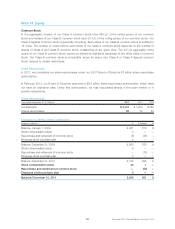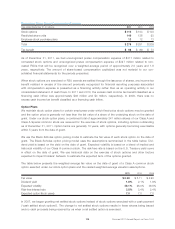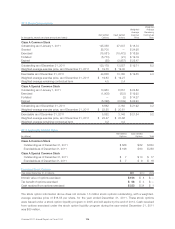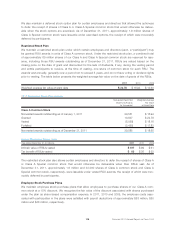Comcast 2011 Annual Report Download - page 107
Download and view the complete annual report
Please find page 107 of the 2011 Comcast annual report below. You can navigate through the pages in the report by either clicking on the pages listed below, or by using the keyword search tool below to find specific information within the annual report.
Nondesignated Derivative Financial Instruments
In 2011, 2010 and 2009, certain derivative financial instruments relating to foreign exchange risk, equity price
risk and interest rate risk were not designated as fair value or cash flow hedges. Changes in fair value for
these instruments are recognized on a current basis in earnings.
For equity derivative financial instruments embedded in other contracts, such as a prepaid forward sale
agreement, we separate the derivative component from the host contract. The derivative component is
recorded at its estimated fair value in our consolidated balance sheet and changes in its value are recorded
each period to investment income (loss), net.
Amount of Gain (Loss) Recognized in Income
Year ended December 31 (in millions) 2011 2010
Operating Costs and Expenses:
Mark to market adjustments on foreign exchange contracts $ (3) $—
Investment Income (Loss), Net:
Mark to market adjustments on derivative component of prepaid forward sale agreements and
indexed debt instruments (151) (616)
Other Income (Expense), Net:
Mark to market adjustments on interest rate collars —15
Total gain (loss) $ (154) $ (601)
As of December 31, 2011, our nondesignated derivative financial instruments related to foreign exchange risk
had a total notional value of $719 million. The notional amount is a measure of the activity related to our risk
exposure and does not represent the amount of exposure to credit loss or market loss, or reflect the gains or
losses associated with the exposures and transactions that the foreign exchange contracts are intended to
offset. The amounts ultimately realized upon settlement of these derivative financial instruments, together with
the gains and losses on the underlying exposures, will depend on actual market conditions during the remain-
ing life of the derivative financial instruments.
Note 11: Fair Value Measurements
The accounting guidance related to financial assets and financial liabilities (“financial instruments”) establishes
a hierarchy that prioritizes fair value measurements based on the types of inputs used for the various valu-
ation techniques (market approach, income approach and cost approach). The levels of the hierarchy are
described below.
• Level 1: Consists of financial instruments whose values are based on quoted market prices
for identical financial instruments in an active market.
• Level 2: Consists of financial instruments that are valued using models or other valuation
methodologies. These models use inputs that are observable either directly or indirectly.
Level 2 inputs include (i) quoted prices for similar assets or liabilities in active markets,
(ii) quoted prices for identical or similar assets or liabilities in markets that are not active,
(iii) pricing models whose inputs are observable for substantially the full term of the financial
instrument and (iv) pricing models whose inputs are derived principally from or corroborated
by observable market data through correlation or other means for substantially the full term
of the financial instrument.
• Level 3: Consists of financial instruments whose values are determined using pricing models
that use significant inputs that are primarily unobservable, discounted cash flow method-
105 Comcast 2011 Annual Report on Form 10-K






